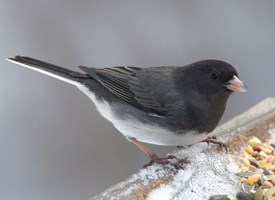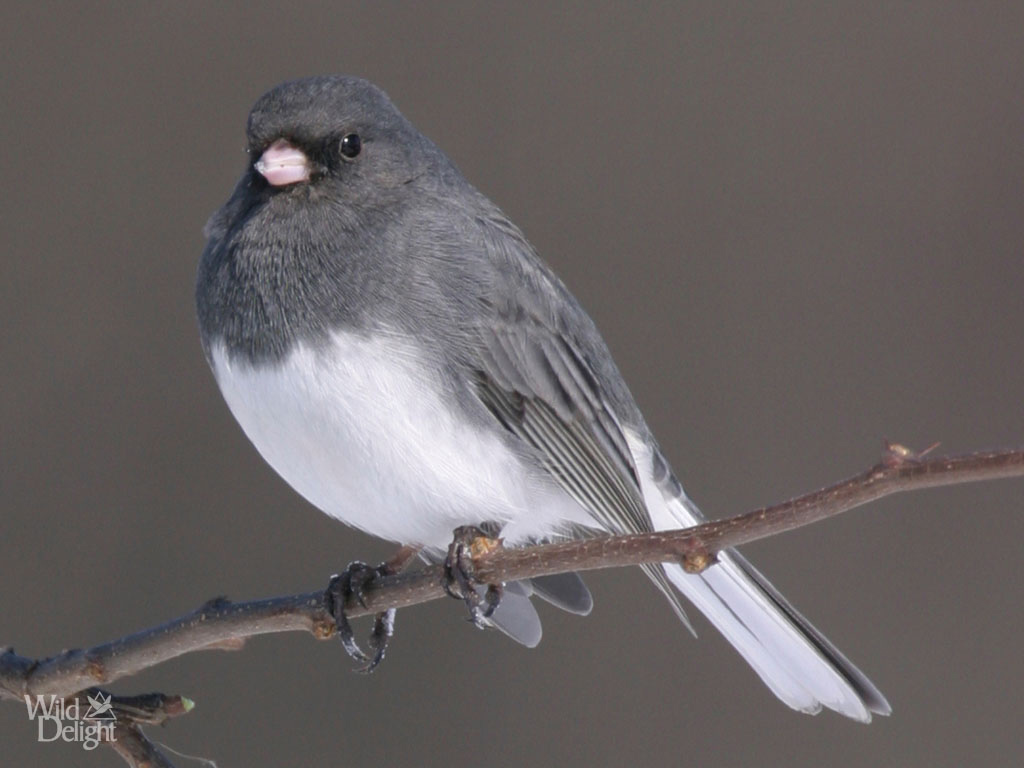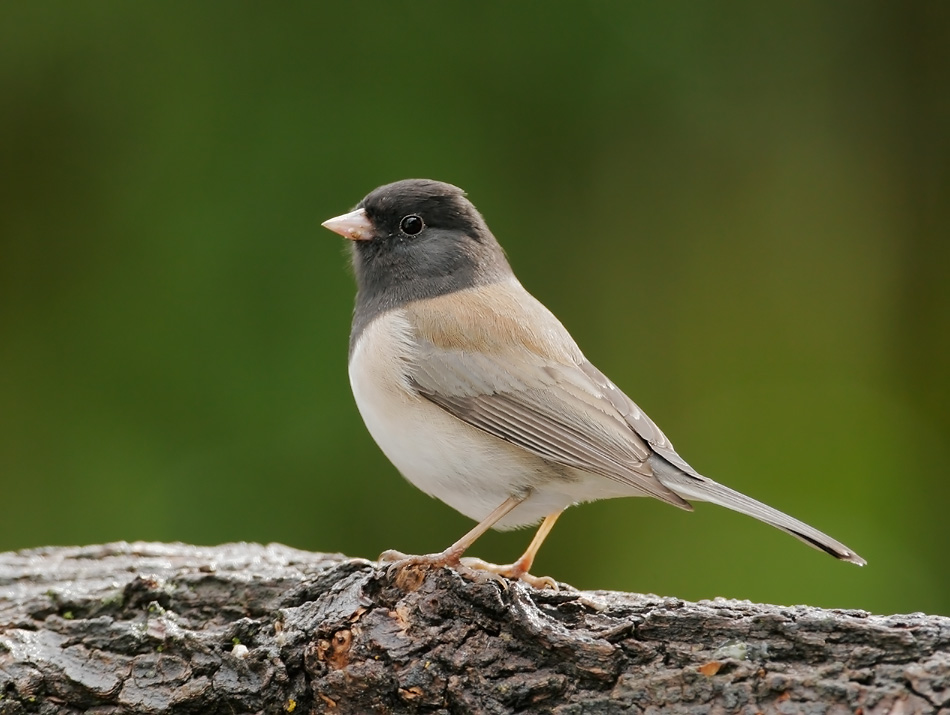
Junco hyemalis
TAXONOMY
Fringilla hyemalis Linnaeus, 1758, South Carolina. Sixteen subspecies.
OTHER COMMON NAMES
English: Gray-headed junco, pink-sided junco, red-backed
junco, Schufeldt’s junco, slate-colored junco, Thurber’s junco,
Townsend’s junco; French: Junco ardoisй German: Junko;
Spanish: Junco Ojioscuro.
PHYSICAL CHARACTERISTICS
5–6.5 in (13–17 cm); 0.5–0.88 oz (15–25 g). Medium-sized
sparrows that lack breast streaking and have white outer tail
feathers. They are geographically variable, and the 16 subspecies
can be divided into five subspecies groups. Slate-colored
juncos (J. h. hyemalis) are found in eastern North America
west to Alaska and the mountains of British Columbia. Adults
have pink bills and are uniformly gray above, with a white
belly; females are similar to males, but are paler gray, often
washed with brownish. White-winged juncos (J. h. aikeni,)
breed in southeast Montana, western South Dakota, and northwest
Nebraska. They are grayish above, with a white belly and
two white wing bars. Pink-sided juncos (J. h. mearnsi) breed in
southeast Alberta, southwest Saskatachewan, and south to
southeast Idaho. They have a dull brown back and pink flanks.
Gray-headed juncos ( J. h. caniceps) breed in the Rocky Mountains.
They have a gray head with dark gray around the eye
and a rusty-red mantle. The J. h. oreganus group have a dark
gray head, cinnamon brown upperparts, and pinkish washed
flanks. Juvenile juncos are dusky, and heavily streaked both on
the back and breast, with whitish bellies.
DISTRIBUTION
Breeds north to the limit of trees in Alaska and Canada and
south to northern Georgia, northern Ohio, northern Minnesota,
central Saskatchewan, and in the mountains to central
New Mexico and Arizona, and northern Baja California, Mexico.
Winters along the Pacific Coast of southern Alaska, southern
Yukon, and northeast British Columbia, east through
central British Columbia, southern Manitoba, southern Quebec,
and southern Newfoundland, south to south Florida, the
Gulf Coast, and northern Mexico.
HABITAT
Breed in a variety of habitats, but especially in open coniferous
or mixed woodlands. In winter, they are found in brush, woodland
edge, and hedgerows.
BEHAVIOR
Territorial and found in pairs or family groups during the
breeding season. Males sing from an exposed perch in a tree,
often from near the top of a small conifer. In winter, they often
occur in loose flocks and frequently associate with other
species of sparrows. They hop or run on the ground.
FEEDING ECOLOGY AND DIET
Juncos feed on the ground. In summer their diet is mostly insects;
seeds are the principal winter food.
REPRODUCTIVE BIOLOGY
Monogamous. The nest, which is a cup of woven grasses and
rootlets, usually is placed on the ground but occasionally is
found low in a bush. Nesting takes place from May through
July. They lay three to six eggs. Incubation lasts 11–13 days,
and the young fledge after 9–13 days. Both parents feed the
young.
CONSERVATION STATUS
Not threatened.
SIGNIFICANCE TO HUMANS
None known.
Other popular Animals
Photo Gallery of - Dark-eyed junco




 Animalia Life
Animalia Life